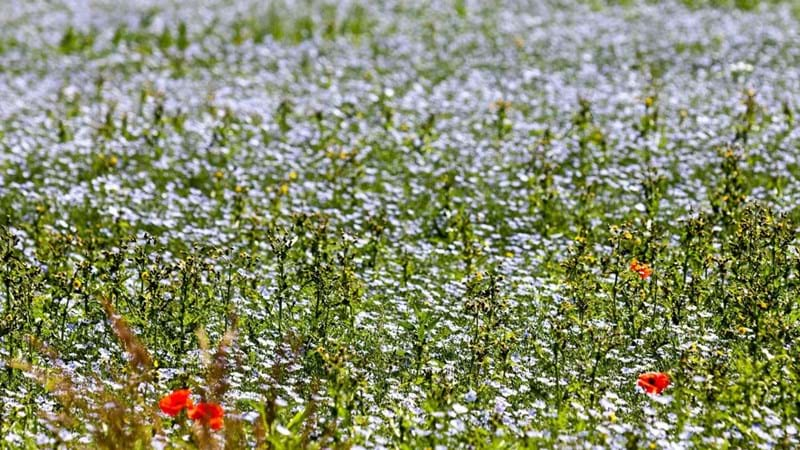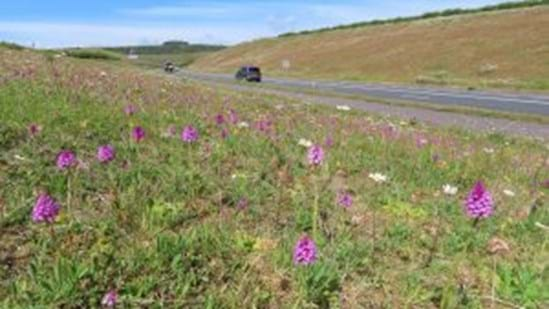Environment - Butterfly surveys
Published
07 Aug 2020

Share this article
We’ve carried out in depth ecology surveys over the years, however it’s important to keep our data up to date, so we can have a clearer understanding of the surrounding landscape.
We asked lead ecologist Stephanie Peay on the A303 Stonehenge scheme to explain what happens during a butterfly survey and why it’s so important to have butterflies in ecosystems.
Who carries out a butterfly survey?
These butterfly surveys are being carried out by experienced ecologists.
What are pollinators?
Pollinators include animals such as insects, that move pollen from one plant or part of a plant to another when they feed on pollen, or nectar produced by the flowers. Many plants must be pollinated by insects before they can produce fruits or seeds. Butterflies are among the many kinds of insect pollinators. You can find out more about pollinators on the Buglife website.
How does the survey work exactly?
The survey method we use is the one for a national butterfly monitoring project, the Wider Countryside Butterfly Survey and involves walking a route recording butterfly species and counting them.
We’re doing a total of four visits between July and August and all the information will go into the national monitoring project, so it can be recorded and contribute to total butterfly numbers right away.
Our specialists will repeat the surveys in future years and compare results, to understand how the area has changed through the construction of the scheme – providing it gets the green light of course.
How did you decide which areas to carry out the surveys?
We’ve chosen routes that will become public rights of way under the current scheme proposal so that in future everyone can see the butterflies and enjoy the environment.
What’s the benefit of carrying out these surveys?
One of the main benefits of the scheme is to enhance biodiversity in the area. Wildlife will be able to move freely above the tunnel and across green bridges, and we aim to improve east and west connectivity to help butterflies, and other insects move more easily between flower-rich areas where they can feed and breed. Carrying out the surveys will help us see how soon this happens after the scheme is built.
We’d like to know more about how butterflies are using the area near to the scheme, so that when the new road is built, and the new chalk grassland is growing we can measure the difference. The food plants for specialist butterflies of chalk grassland aren’t in the cereal crops of the area and where butterflies are present it is mostly around the hedges and field margins. You might find some flowers which butterflies visit – however the area is not attractive enough at the moment for more specialist species of butterflies.
Why are butterfly numbers so important?
They are sensitive indicators of the health of the environment and play crucial roles in the food chain, as well as being pollinators of plants. Many species are under threat due to loss of their habitats. They can fly, but many of them don’t go far if the habitat they must cross isn’t suitable, and they are sensitive to climate change too. You can find out more on why butterflies are so important for the ecosystem on the Butterfly Conservation website.
Why would increasing the chalk grassland area help increase butterfly numbers?
Currently within the scheme proposal we’re aiming to create more than 300 acres of new chalk grassland which will contain lots of flowers and food plants for caterpillars, which will greatly benefit butterflies.
We’ve seen a good increase in butterfly numbers and species following the opening of the Weymouth Relief Road in Dorset. Completed in 2011 the road has slopes of chalk grassland next to it and there have been over 30 species of butterfly recorded, which is over half the butterfly species known to live in Britain, and includes Small Blue, Adonis Blue and Chalkhill Blue.

(Photo: Weymouth relief road)
The chalk grassland for the A303 Stonehenge would be greater in area, longer in length and better connected to existing chalk grassland.
How can I get involved?
Anyone can contribute to recording the UK butterfly numbers. The Big Butterfly Count is a UK-wide survey aimed at helping the UK to assess the health of our environment simply by counting the amount and type of butterflies (and some day-flying moths) we see. Simply visit the Big Butterfly Count website to find out more information.
Anyone with a garden or even a window box can help butterfly numbers by planting flowers that provide nectar.
Please check back for further updates on how our surveys have gone and what our ecologists found.
